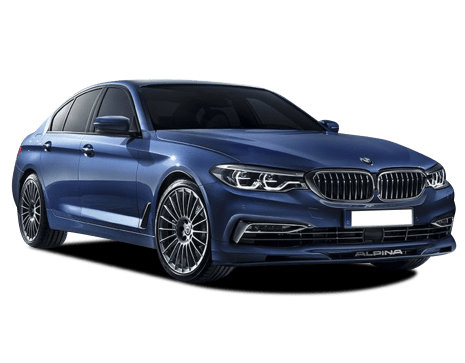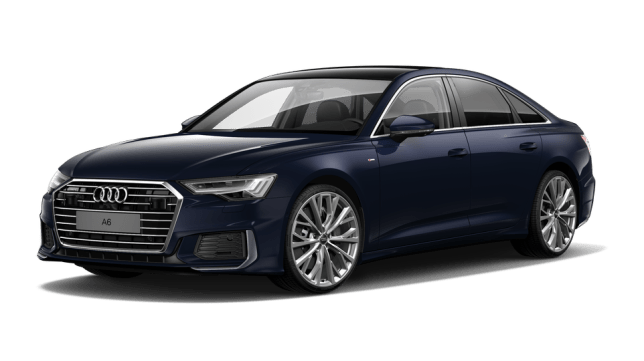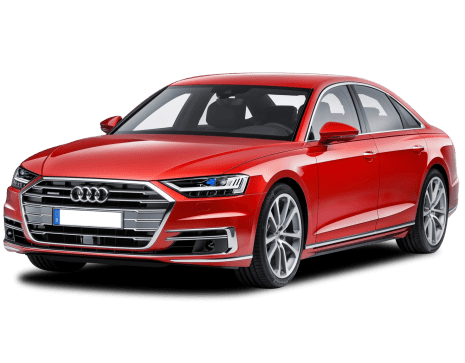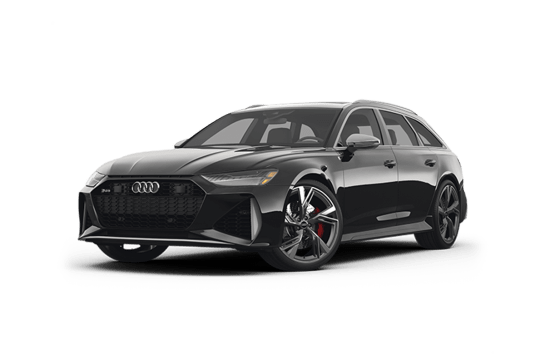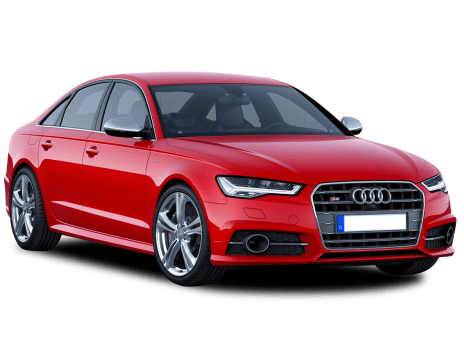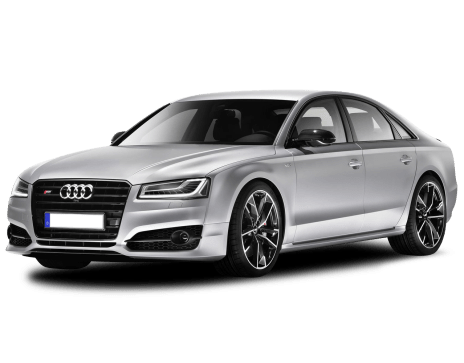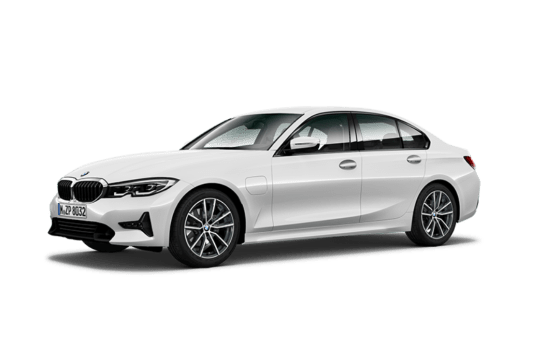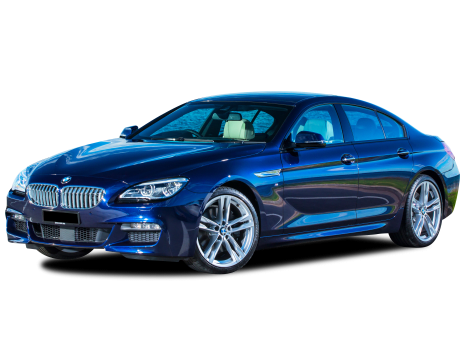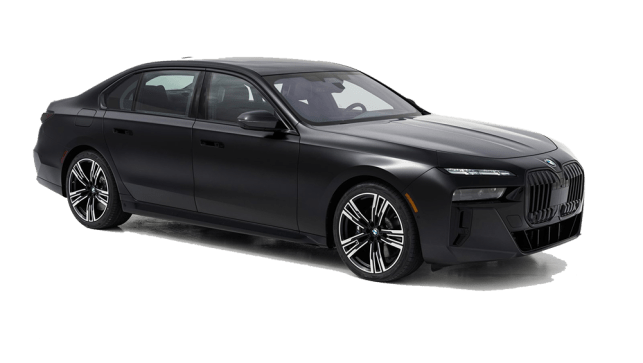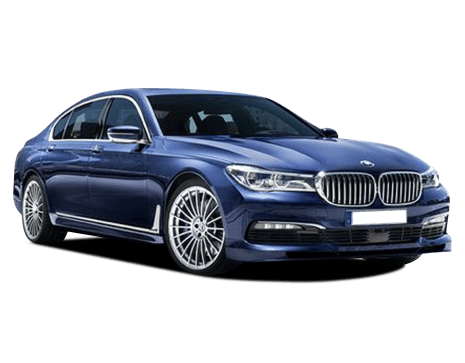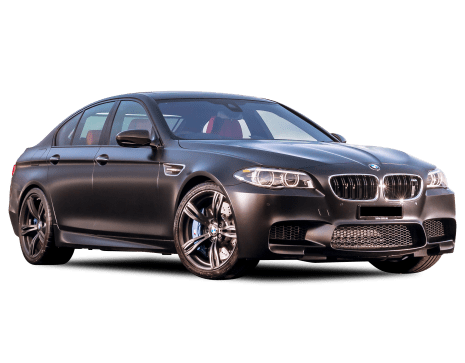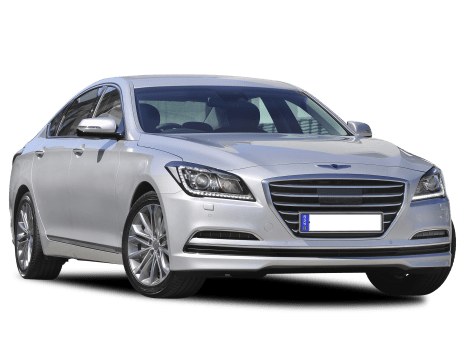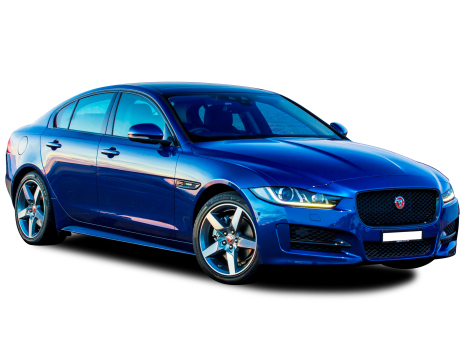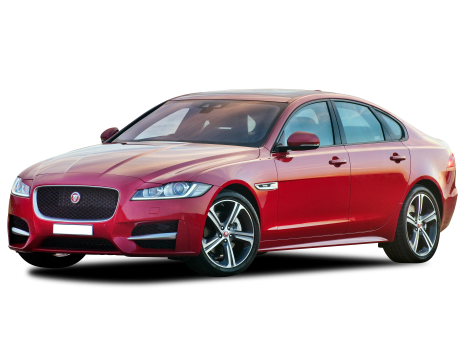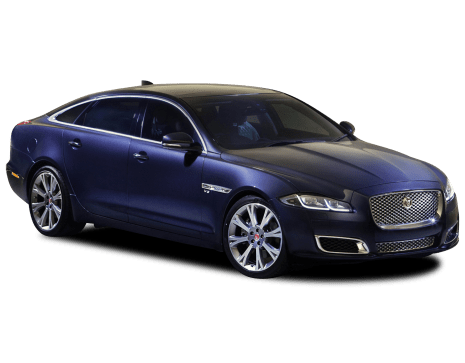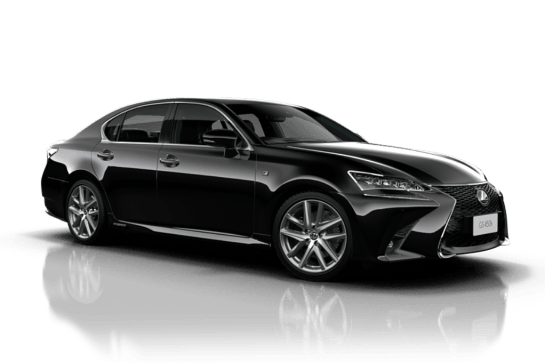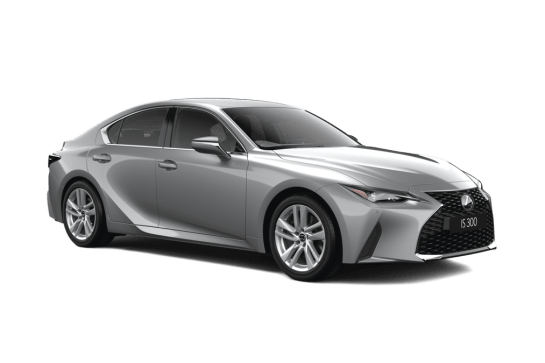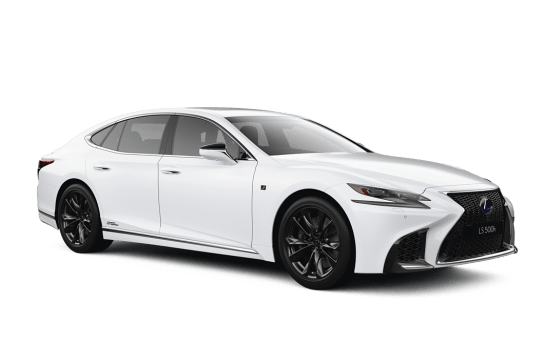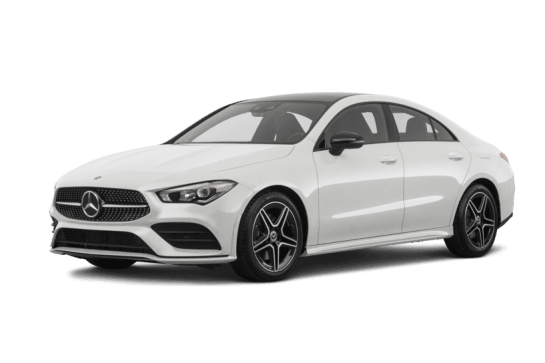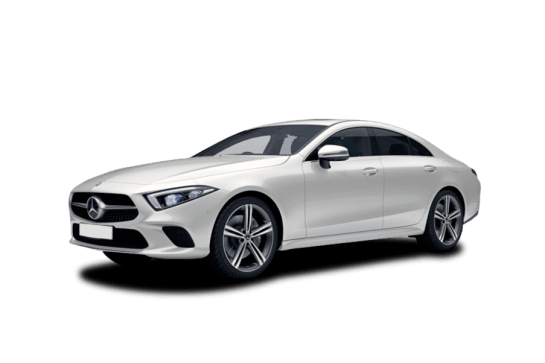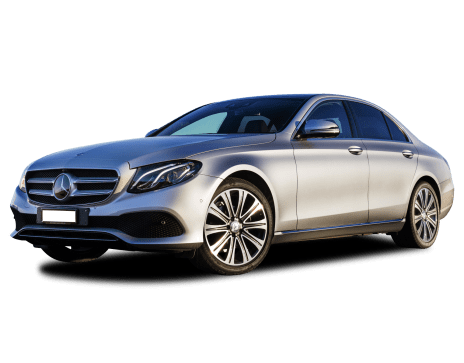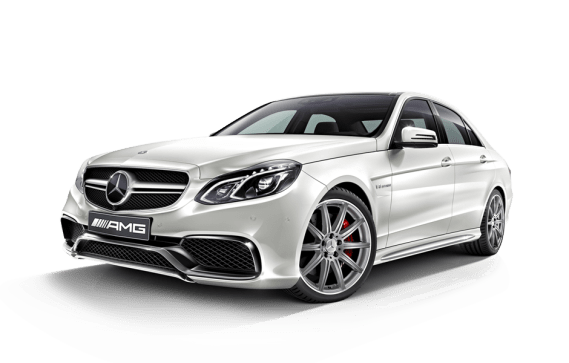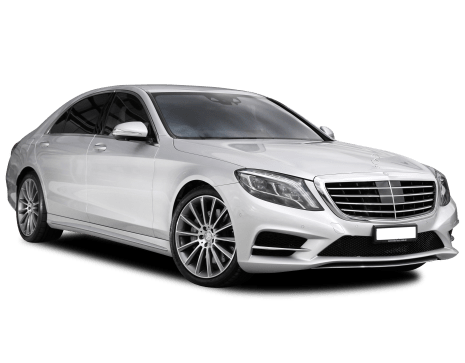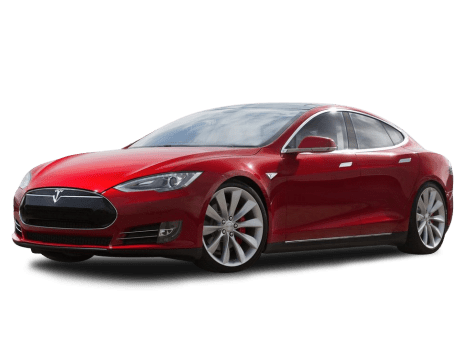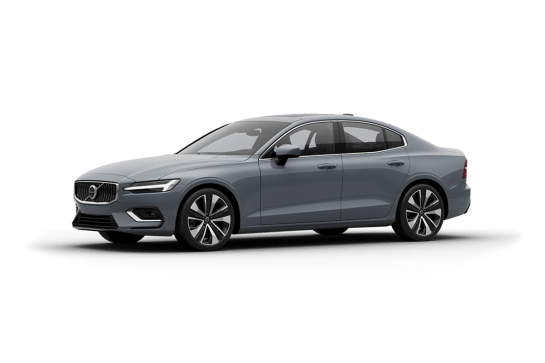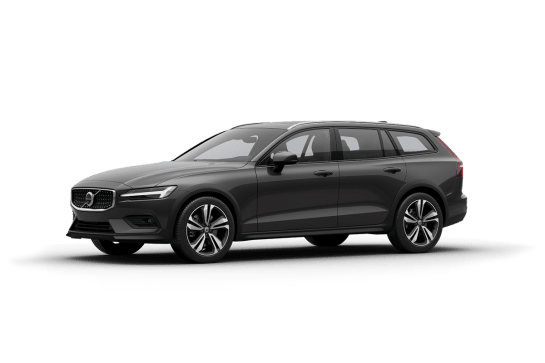
BMW 5 Series VS Lexus LS
BMW 5 Series
Likes
- Dynamic ability belies its weight
- Plush and ergonomic interior
- Three variants all have strengths
Dislikes
- 520i is pricey for 153kW four-pot
- Styling a little gaudy in places
- Multimedia could be simpler
Lexus LS
Likes
- Sumptuous luxury for the price
- Impressive efficiency/performance balance
- Excellent comfort and refinement
Dislikes
- Styling looking a little dated
- Multimedia system too downmarket and also looking dated
- A bit more driver involvement would be terrific
Summary
BMW 5 Series
More than half a century of 5 Series pedigree has led BMW to this, the first electric version of its venerable sedan, the i5.
It's true that electric cars come with benefits that suit the realm of luxury (or at least executive) motoring like their effortless acceleration and near-silent operation, so this new G60 5 Series has the potential to be the best yet in its ‘i5’ form.
But there are rivals, well-liked ones at that, which BMW must contend with to snatch the spot at the top of the large premium sedan ladder technically held currently by the Porsche Taycan in terms of sales - though Mercedes’ E-Class would lead if its electric cousin EQE’s sales were combined.
Read more about
So, with names like that to go up against, BMW better have brought its A-game.
| Safety rating | — |
|---|---|
| Engine Type | — |
| Fuel Type | Hybrid |
| Fuel Efficiency | —L/100km |
| Seating | — |
Lexus LS
Lexus is returning to its roots and playing to traditional strengths with the 2021 LS update, as the Japanese luxury brand braces itself for the imminent release of an all-new Mercedes-Benz S-Class.
On sale now from $195,953 before on-road costs, the facelift ushers in a raft of comfort, refinement, driveability and technological upgrades, striving to deliver the quietest and most luxurious experience in the upper luxury sedan segment.
The blink-and-you'll-miss-it makeover runs to redesigned headlights, wheels, bumpers and tail-light lenses, as well as the inevitable multimedia screen update, improved seating revised trim and better safety.
Along with an all-in equipment list and unparalleled levels of ownership benefits, the goal is to emulate the dramatic differences that existed between the LS and its mostly German competition more than 30 years ago, which helped make Lexus a disruptor, decades before the term was even coined.
The MY21 range will continue offering two grades – the racier F Sport and opulent Sports Luxury – in either V6 twin-turbo petrol LS 500 or V6 petrol-electric hybrid LS 500h powertrain choices, as per the XF50-generation's Australian debut back in late 2017.
The question is: has Lexus gone far enough with its limousine flagship?
| Safety rating | — |
|---|---|
| Engine Type | 3.5L |
| Fuel Type | Hybrid with Premium Unleaded |
| Fuel Efficiency | 6.6L/100km |
| Seating | 5 seats |
Verdict
BMW 5 Series8/10
There’s no getting around the i5 being a rather expensive offering. More than $150,000 to get into an electric sedan that’s not much faster than a hot hatch is a big ask, but there’s plenty to enjoy about the 5 Series.
Things like its heated leather seats shouldn’t be the reason you’re willing to spend so much on a sedan when a $50,000 hybrid SUV will score you the same, instead it’s the fact the 5 Series is a delight to drive and hasn’t lost the feeling of prestige the badge has earned over the last half a century.
In terms of value - if speed isn’t your focus and you’re less of a gadget-type-operator when looking at cars like this - the 520i has the style and comfort you’d need and at $100K less than the M60.
And in terms of large electric sedans, the i5 eDrive40 is cheaper than a Porsche Taycan (by a little) or an Audi e-Tron (by a lot). The Genesis G80 Electrified is the closest cheaper rival, by about $10K, or the less powerful Mercedes EQE is similarly priced at $154,900.
Essentially, if you’re looking at a 5 Series, it might be worth considering if you really need it to be electric, but if so, there aren’t many alternatives in its category for the price.
Note: CarsGuide attended this event as a guest of the manufacturer, with meals provided.
Lexus LS7.6/10
One might be surprised to learn that, without having driven the latest S-Class, rival large luxury sedans have struggled to juggle comfort and refinement with agility and speed. Even in this modern age of adaptive dampers and air suspension. The Germans, in particular, seem to struggle at times.
The latest Lexus LS, however, walks the line with impressive confidence and poise, prioritising the former yet without dropping the ball with the latter. Just keep in mind that the 500h Sports Luxury manages the balance best.
The bar may just about be raised with the bestselling Stuttgart's arrival from March, but even then, with its extensive and complete specification, outstanding hybrid efficiency/performance combination and remarkable build quality and presentation, Japan's master luxury sedan deserves to find more buyers in this country.
Well done, Lexus.
Design
BMW 5 Series
If you’ve watched other members of the BMW family go into a new generation within the last few years - the 3, 4 and 7 Series particularly, you won’t be too surprised by what you see here. Especially with the latter, having seen the petrol variants look roughly the same as the electric ones.
BMW specifically made the petrol 520i and the i5 variants look similar for egalitarian purposes - to not disenfranchise 520i buyers who are still spending a fair chunk of cash but might not be ready to go EV.
That means all three variants score a mix of new and old. The kidney grille remains and isn’t as large as on the M3 or 4 Series, while the bonnet line following it and the ‘character line’ down the car’s side also remain. And yes, the Hoffmeister kink where the C-pillar meets the passenger window’s lower corner is still there.
On that C-pillar though is a ‘5’ stamped into the bodywork, new to this generation, while the front grille as mentioned has a glowing light surround - the brand’s ‘Iconic Glow’ already seen on the 7 Series.
Overall, thanks to being slightly larger in every dimension, the new 5 is starting to look bigger than a 7 Series from a little while ago. And that’s because it is - its body is overall longer than an E65 7 Series from the mid-2000s.
It’s 5060mm long 1900mm wide, 1515mm tall (97mm longer, 32mm wider, and 36mm taller). Its wheelbase is 20mm longer too at 2995mm.
Lexus LS7/10
The XF50 series is a long and imposing machine, but is also arguably the most Toyota-looking LS in history, sharing design cues with most larger sedans the company builds – and yes, even the Camry. This is a departure from the Mercedes aping ‘90s and '00 generations. If the latest S-Class can look like a 200 per cent enlarged CLA, why not?
The most obvious – and pleasing – changes are realised when the headlights are switched on, revealing the BladeScan tech. In the F Sport, the redesigned bumpers' air intakes are noticeably larger and have jazzier pattern inserts, as part of a broader exercise in differentiating the grades with what's perceived as ‘sportier' elements throughout the car. The divisive ‘Spindle' grille theme remains.
Out back – arguably the most Toyota-esque part of the LS – are piano black tail-light inserts to differentiate new from old.
If Lexus is about presenting nuanced styling evolution as to not spook the demographic, then the MY21 flagship sedan succeeds brilliantly.
Practicality
BMW 5 Series
A longer wheelbase means more space inside, where the 5 Series also still looks fairly familiar to those who have spent any significant time in a recent model BMW.
BMW has historically been pretty bang-on with ergonomics, and the new-gen 5 does a good job of sticking to that. Comfortable sports seats and quality feel for the materials on touch points mean the 5 Series feels nice to be in, and relatively restrained interior design for a somewhat luxurious car means it looks nice too.
It’s let down only by a couple of things - its multimedia screen and Operating System 8.5 is a little less simple to use now, and requires more touching the screen than previous iDrive systems, rendering the scroll wheel less useful.
The BMW Interaction Bar too is a little tricky to see controls on, as well as lacking physical feedback for using controls. Vent flow controls are digital sliders on the Bar, while vent direction is controlled by an unusual ‘joystick’ style control nearby.
The rear seat is plenty spacious, as you’d expect from a large sedan, with climate controls and ports for charging devices in the rear.
Lexus LS10/10
This is more like it.
While nowhere near the apex of striking interior design, with a dashboard that – again – is quite clearly from the contemporary Toyota way of thinking, the LS is massive inside, heaving with standard luxury and obsessively crafted in a few key touchpoint areas.
The brand makes a big noise about the floating door-sited armrests and their very obviously expensive craftspersonship, but it is eye-catching and satisfying to drink in the detailing, extending in and around into the dash seamlessly, carrying on the flowing, salubrious themes of sculptured multi-dimensional shapes. In 1989 journos were handing out similar platitudes in the original LS.
If the techno-overload of a Mercedes MBUX or Tesla's OTT tablet leave you cold, this enhances the luxury experience by adding a rich, cosy, warm ambience – though the instrumentation binnacle is familiar; all we can see is the first IS 250 of 1999, complete with its single, watch-face inspired analogue dial.
Here, of course, it's digitised and multi-configurable to accommodate sat-nav, multimedia and other vehicle-related needs, but it is a oddly nostalgic, given the brand's first BMW 3 Series rival is now almost forgotten. Still, it's interesting and isn't that what eccentric rich people who don't want to drive the cliché luxury behemoths desire?
With endless adjustability, the seats are sumptuous to the point of subsuming, in the way you'd imagine a limousine to be, but because of their bolstered support, they also can be manipulated into gently cupping you enough to stop you sliding about when throwing the Lexus about with gay abandon – more on that later on.
It doesn't need mentioning that the fit and finish is fabulous, with the enveloping luxury continuing out in the back seat. The Sport Luxury's airline-style recliners are enough to turn doubters into doe-eyed believers, with their restful, relaxing, relieving, refreshing and revitalising ways – well, to an extent that an airport massage-chair minus the coin box and dodgy stains can, in any case. But the fact remains: ensconced deep into that leather-lined luxury, slumber beckons. Namaste!
And that's the point of LS. It creates a sanctuary from the outside elements at least as effectively as Audi A8s, BMW 7s and Merc S' have costing upwards of 50 per cent more. The cabin is spacious, soothing and secure. On our extended drive of both 500 models, this was made abundantly clear with two stints behind the wheel of the visually similar ES 300h.
Quiet and refined, that car felt loud and coarse compared to the smooth silence of its supersized sibling. Mission accomplished, Lexus.
Price and features
BMW 5 Series
There are three members of the new 5 Series family from launch, with a base 520i starting things off from $114,900 before on-road costs.
It’s the only petrol-powered (with mild-hybrid, we’ll come back to this) variant in the trio, but it does have a fairly extensive list of features as standard. In terms of tech and comfort, most of what comes with the 520i is available further up the range too, with the major differences being drivetrain related.
In the 520i, the interior upholstery is synthetic ‘Veganza’ leather with Alcantara, though optional Merino leather is a $4000 BMW Individual option. The front seats are heated as standard, however, and electrically adjustable with memory settings and lumbar support.
A 12.3-inch instrument display paired with a 14.9-inch multimedia display are standard across the range, running BMW’s Operating System 8.5, while a head-up display, ambient lighting, wireless phone charging tray and BMW’s ‘new’ Interaction Bar are included too - a crystalline-style strip across the dash with touch-sensitive ‘buttons’ like the climate controls.
A panoramic glass roof - unable to be opened - is standard too, while the 520i’s sound system is a Harman Kardon set-up with 12 speakers.
Exterior features are quite similar to the more expensive i5 variants, with Adaptive LED headlights, automatic boot opening, an M design kit with front and rear aprons, side sills, and BMW’s Iconic Glow kidney grille surround.
Optional in the 520i is an ‘Enhancement Package’ which adds a choice of aerodynamic 21- or 20-inch wheels, metallic paint, and a 655-watt 17-speaker Bowers & Wilkins surround sound system for $5400. One test car on the launch we attended was painted in a BMW Individual colour - Tanzanite Blue - which upped the price to $7800.
Moving up the range to the mid-tier i5 eDrive40, which starts from $155,900, adds Merino leather interior, metallic paint, Bowers & Wilkins surround sound and aerodynamic 20-inch wheels standard, but it also includes adaptive suspension and some other EV-related features.
BMW’s ‘Adaptive Suspension Professional’ comes with Integral Active Steering (rear-wheel steering) and is a step up over the M Sport suspension from the 520i, while its aero wheels function as a way to keep the electric car’s range being affected by resistance.
The eDrive40 also comes with an acoustic protection system to make ‘electric car noises’ to warn pedestrians, as well as BMW’s ‘Iconic Sounds’ for the occupants - basically a system that uses orchestral sounds composed by Hans Zimmer that are affected by acceleration intensity, speed, and drive mode.
It also comes with the standard kit for an electric car, a Mode 2 and Mode 3 charger, cable, and a five-year Chargefox subscription.
The top-spec i5 M60 xDrive ups the cost to $215,900 and the features list again slightly (as well as being far more powerful).
Its suspension is even more advanced, adding the brand’s Adaptive M Suspension Professional with active anti-roll, plus 21-inch aero wheels as a no-cost option. The M60 also gains an M rear boot lip spoiler.
Inside, BMW’s ‘Crafted Clarity Glass’ controls in the centre console are standard, as is ventilation for the front seats and a four-zone automatic air conditioning system.
Lexus LS7/10
Value, refinement and customer care are Lexus' traditional brand pillars.
Lexus broke through with recession-ravaged consumers at the dawn of the 1990s by firstly presenting an attractively conservative S-Class sized sedan at smaller E-Class prices, and then adding an uncannily hushed cabin of exquisite build quality, silky V8 performance, the entire kitchen sink of gadgetry and unheard-of ownership privileges, like tickets to events, free parking at selected venues and home/work vehicle pick-up at service time.
If such a strategy worked then, why not an expanded version now? After all, while sales started off slowly in Australia three decades ago, in the vital US market its impact was immense. Lexus eventually gained traction locally, but nowadays the LS lags significantly behind the leading S-Class; in 2020, it managed a three per cent share compared to Mercedes' 25.5 per cent – or just 18 registrations versus 163.
Sadly, the V8s haven't returned, but the facelift does bring a richer interior with high-quality materials to elevate comfort levels, backed up by redesigned seating and overhauled adaptive suspension dampers that also promote a cushier ride while not compromising steering/handling performance.
Meanwhile, new ambient lighting and (at last) touch-display capability for the 12.3-inch central screen and Apple CarPlay/Android Auto connectivity do at least play catch up with the rest of the industry, let alone its direct rivals.
The same applies with the fresh safety gains for the series that include a digital rear-view mirror, Lexus Connected Services (with automated collision notification, SOS call and vehicle tracking), Intersection Turning Assist (that helps keep the driver from turning into on-coming traffic or brakes the car if, whilst turning, a pedestrian crosses the road), far-broader functionality of the autonomous emergency braking systems (including greater rear-cross-traffic warning and intervention), full-speed stop/go adaptive cruise control with traffic flow capability, improved road-sign recognition, better lane-keep and assist tech and a next-gen adaptive high beam tech dubbed BladeScan with stronger lighting and anti-glare performance parameters.
These come on top of the standard adaptive dampers, height-adjustable rear air suspension, front/rear cross-traffic alert, sunroof, gesture-activated powered boot lid, soft-close doors, puddle lights, 23-speaker premium audio, digital radio, DVD player, head-up display, satellite navigation, climate control with infrared body temperature sensitivity, heated/vented front and rear outboard seating, powered seats with memory, heated steering wheel, electric rear blind and a four-camera surround-view monitor.
The F Sport from $195,953 differs from the Sport Luxury from $201,078 (both before on-road costs) with its 10 airbags, dark 20-inch alloys and exterior trim hues, brake-package boost, rear-wheel steering, variable gear ratio, unique instrumentation and dark-metallic interior themes and bolstered front seats, while the LS 500 adds active anti-roll bars front and rear.
Going Sports Luxury changes things up somewhat, with two extra airbags (rear-seat cushion items), special noise-reduced alloys, rear-zone climate control, Semi Aniline leather, a front-seat relaxation system, rear-seat tablet-style screens, powered reclinable heated/vented rear seats with ottoman and massage, rear centre armrest with touchscreen climate/multimedia control, side sunshades and – in LS 500 only – a rear cooler box.
On the owner-benefit front, ‘Encore Platinum' introduced last year builds on the regular Encore's valet servicing with benefits like free use of a Lexus for business or leisure travel within select Australian and now-New Zealand destinations (one-way only – sorry, Kiwis) for up to four times annually and lasting the first three years of ownership. There's also eight yearly free valet parking at certain shopping malls and other venues, several celebrity-laden social events/activities and discounted Caltex fuel.
With all these features as standard, the LS costs several tens of thousands of dollars less than most full-sized luxury sedan rivals with broadly similar performance outputs and optioned up with equivalent luxuries, before the Encore Premium privileges. However, while the Lexus' four-year/100,000km warranty also betters most competitors by one year, it is mileage capped while others' regimes aren't, and none beat Mercedes' five-year/unlimited program.
Though prices are up by nearly $2000, it's fair to conclude the extra kit and improvements help offset them, but it's also worth remembering that earlier last year, Lexus hiked LS prices by up to nearly $4000, and not too long before Encore Platinum was announced...
Under the bonnet
BMW 5 Series
Despite BMW calling it ‘electrified’, the base 520i is only a mild hybrid so most wouldn’t realise unless they were told.
Its turbocharged 2.0-litre four cylinder puts out a modest 153kW and 330Nm, with power and torque sent to the rear wheels via an eight-speed automatic transmission.
BMW claims it’ll knock over the 0-100km/h sprint in 7.5 seconds, a few seconds too slow to blow anyone’s socks off.
The mid-spec eDrive40 has a little more kick to it, its rear-mounted electric motor capable of 250kW/430Nm and able to cut that time to 6.0 seconds.
It’s fitted with an 84kWh battery to draw its power from, the same as the 442kW/820Nm M60 with its all-wheel drive dual-motor setup.
The M-tuned i5 can hit 100km/h in a claimed 3.8 seconds. Bye bye socks, perhaps.
Lexus LS7/10
The LS is powered by two versions of a 3.5-litre V6 petrol engine.
Around 75 per cent of buyers choose the 500, which employs Lexus' V35A-FTS 3445cc double overhead cam 24-valve twin-turbo V6 petrol engine, delivering 310kW of power at 6000rpm and 600Nm of torque from 1600-4800rpm. Powering the rear wheels via an updated AGA0 10-speed torque-converter automatic transmission with driver-adaptive tech, it can reach 100km/h in 5.0 seconds flat, on the way to a 250km/h top speed.
For the facelift, it receives a revised twin-turbo set-up with reduced lag, new pistons and a lighter, one-piece aluminium intake manifold to save weight and cut noise paths while retaining existing outputs.
The 500h, meanwhile, gains software updates for more electrical assistance at lower revs for stronger acceleration times and feel. It employs the 8GR-FXS engine – a 3456cc naturally-aspirated variation with a higher compression ratio (13.0:1 versus the 500's 10.478:1), developing 220kW at 6600rpm and 350Nm at 5100rpm.
Being a series-parallel hybrid, there is a 132kW/300Nm permanent magnet motor and 650-system volt lithium-ion battery, making for a combined power output to 264kW. It now can run longer on pure electric – up to 129km/h compared with 70km/h before. Sending drive to the rear wheels via the L310 continuously variable transmission with a four-speed shift device and a 10-speed simulated shift control operation to mimic more natural auto responses, it requires 5.4s to hit 100km/h, and manages the same top speed as its 500 counterpart.
Both autos, by the way, have more aggressive Sport and Sport+ shift ratio software, while the M manual mode has paddle shifters.
Kerb weight varies from 2215kg (500 Sports Luxury) to 2340kg (500h Sports Luxury).
Efficiency
BMW 5 Series
BMW claims the petrol 520i sips 6.7 litres per 100km from its 60-litre fuel tank, though we were unable to independently test any of the claimed figures on the launch day.
The base car has a theoretical range of 896km if it was possible to achieve the claimed fuel consumption figure for the duration of the whole tank - but it isn’t and realistically you could knock about 20-30 per cent off that, depending on how enthusiastically you drive.
In the i5 variants, the same 84kWh battery provides slightly different ranges due to the eDrive40 using 16.56kWh per 100km, and the M60 using 18kWh.
The eDrive40 has a claimed 550km maximum range, while the M60 has a 506km figure thanks to its extra motor and weight.
Lexus LS8/10
The LS 500 returns a combined 10.0 litres per 100km, or 14.2L/100km urban and 7.6L/100km extra urban. Thus, the combined carbon dioxide emissions rating is 227 grams per kilometre, but can range from 172-321g/km. A theoretical average range of 820km is possible.
Moving on to the hybrid, the LS 500h manages a combined 6.6L/100km, or 7.8L/100km urban and an impressive 6.2L/100km extra urban. Its combined CO2, therefore, is 150g/km, and can drop as low as 142g/km and rise as high as 180g/km.
The Hybrid's average range should be about 1240km.
Both models require premium unleaded petrol as a minimum - 95 RON in the LS 500 and 98 RON in the Hybrid.
A key goal has been on reducing the stop/start frequency of the 500h's petrol engine during high-speed driving to increase both refinement and response.
Driving
BMW 5 Series
For some cars, the list of features is what really separates the variants, but that’s not the case for the 5 Series. As is a bit of a BMW tradition, the drivetrains dictate the different trim levels and prices, and there are three fairly distinct flavours of 5 Series.
Starting at ground level, the 520i might at first seem like a bit of boring vanilla. Except it’s actually quite smooth and light vanilla.
There’s not a lot to write about when it comes to its drivetrain, but the lightness of its engine and petrol tank combo when compared to EV batteries and motors is refreshing, and makes for a quite dynamic rear-drive sedan.
Its 153kW and 330Nm is delivered smoothly enough with the mild hybrid assistance doing a little in helping responsiveness, but without intervening in the gearshifts it doesn’t feel particularly keen.
It lacks the ride comfort of the i5’s adaptive suspension, but it’s able to be driven in a spirited manner that belies its size and even, to some extent its 1725kg kerb weight. Chocolate sprinkles on the vanilla, if you like.
It’s not fast, but it feels nimble compared to its electric siblings and can carry a fair bit more speed through corners, after which there’s room to notice its rear-drive characteristics.
It’s especially noticeable after getting out of the 2130kg eDrive40, though the extra power from its 250kW/430Nm motor makes for some more spirited acceleration and a little more excitement when exiting a corner, especially if you’re aiming to double-check if it really is rear-wheel drive. There’s a little more than choc-topped vanilla going on here.
The steering is, like in the 520i, direct and responsive, though in most cases is probably best set to ‘comfort’ rather than ‘sport’ in its settings.
The eDrive40 is rather comfortable and capable when barrelling through twisty backroads, and doesn’t feel out of hand for a five-metre-long sedan. It holds its weight well, and telegraphs when you might be approaching the limit quite sensibly.
When considering that, then, it’s impressive how brutally capable the 2305kg M60 is.
Here, we’re looking at a double-choc fudge with extra choc, and maybe some cookie dough in there for good measure. There’s a lot to like, but boy is it heavy.
It’s 580kg (or exactly half a Peugeot 208 GTi) heavier than the 520i, but it feels quick on its feet and its anti-roll seems to do a lot in terms of dynamics, the limiting factor really seems to be its tyres (which can and will squeal quite quickly to let you know when approaching said limit).
While you’ll need to take caution with how much speed you approach a corner with, you’re not going to lack acceleration on the other side, its all-wheel drive being less ‘fun’ but more efficient at getting you away from the bend than in the rear-drive eDrive40.
That adaptive suspension does also translate to a comfortable ride on relatively rough roads - only particularly bad bumps will reveal how much weight and pressure is being placed on each corner of the big sedan.
Lexus LS7/10
No matter what it says on the badge, the LS is first and foremost a large, heavy and imposing luxury sedan. Its sporting capabilities are relative.
Keeping that in mind, the updates for the MY21 version are a success, since the largest Lexus passenger car is uncannily quiet and refined, as you might hope and expect. The ride quality is largely cushioned and free of bump intrusion inside, with a sense of gliding over most road surfaces as if they were blemish-free.
We much prefer the Sport Luxury version, and the 500h in particular, because it can run silently in electric mode for periods, and somehow feels more lavish and plusher to ride in.
Whether that's psychosomatic or actual is debatable, for essentially both the 500 and Hybrid share the same multi-link front and rear platform, adaptive dampers and rear air suspension set-up, but the impression is that this grade is the choice for those wanting to feel ultimate luxury and peace.
On paper, the 500 F Sport should be the driver's choice, since it has the racier look and set-up, as well as 600Nm of tree-trunk-pulling torque.
The thing is, it doesn't necessarily feel all that athletic, and maybe that's because the whole existence of this model is based around isolating its occupants as comfortably as possible. This is no criticism, and the LS certainly envelopes everybody as a great limo ought to, but don't expect Audi S8 levels of steering crispness or handling agility.
Anyway, if you need to feel as if you are a princess in exile escaping villains with bazookas out the back of a Kombi, then the LS does an exceptional job in keeping the 2.3-tonne-plus mass in motion, cornering safely and precisely where it is pointed to, without losing too much composure or traction in tight, fast bends. This is quite a feat, really, for the big Lexus can be hurried along a mountain pass through narrow passages like a much smaller sedan, and without being bumped out of line or off course.
Again, for all-out performance, the 500h feels stronger, especially when called on to pull ahead instantly at speed, because the electric assistance is palpable compared to the regular 500's twin-turbo V6. Both are obviously very, very fast and sufficiently responsive to throttle inputs – and it's a sign of the brand's engineering prowess that their internal serenity means the speed isn't obvious until you're looking at the speedo – but there isn't even a whiff of lag in the Hybrid. That said, once on the go, that twin-turbo V6 in the 500 soars.
Considered in this context, you have to say that the MY21 LS is an exceptionally sumptuous and sophisticated limousine with the speed, safety, security and capability of taking you from point A to B without drama or noise.
Or, for that matter, excitement.
Safety
BMW 5 Series
ANCAP hasn’t crash tested the new 5 Series. The last generation was a five-star car and it would be unusual to see that change with additional safety features - even with stricter testing.
The 5 Series comes with BMW Driving Assistant Professional as standard, with active cruise, lane assist and departure warning, front and rear cross traffic alert, collision prevention and intervention systems - in fact BMW says it has about 40 safety systems including an augmented reality dash display.
Its list of airbags includes front and side airbags for driver and passenger including one between the two occupants, as well as curtain airbags front and rear.
Lexus LS8/10
Neither the ANCAP organisation nor Euro NCAP has crash-tested an LS for this or previous generations. And, for that matter, nor has the American NHTSA or IIHS, due to low sales.
Standard safety items include 10 to 12 airbags (depending on model, with dual front, front-side and curtain items), AEB with pedestrian and cyclist detection, forward collision warning, driver attention alert, Lane Keep Assist, a Front Lateral Side Pre-Collision System, Active Steering Assist, radar-based adaptive cruise control, Parking Support Brake, Road Sign Assist (detects certain speed signs), a four-camera Panoramic View Monitor, Blind Spot Monitor, Lexus Connected Services, Electronic Stability Control, traction control, anti-lock brakes with electronic brake-force distribution and brake-assist, and parking sensors all-round. The BladeScan adaptive LED headlights with anti-dazzle tech is also fitted.
The LS' AEB functions between 5km/h and 180km/h.
Additionally, two rear-seat ISOFIX points as well as three top tethers for straps are supplied.
Ownership
BMW 5 Series
BMW has a fairly industry-standard five-year/unlimited kilometre warranty on its new cars, while its electric car batteries are covered by an eight year/160,000km warranty.
For servicing, BMW offers numerous discounted packs and deals based on your preferences and desire to pay upfront.
For the 5 Series, a five-year/80,000km basic service package is $2400, though the i5 will have different needs and lower servicing costs not yet listed by the brand.
Lexus LS7/10
Lexus offers a four-year 100,000km warranty, which is considered one of the worst in the industry for mileage distance, due to the low number. Most rivals offer unlimited kilometre warranties, as well as more years in some cases.
However, it does come with a three-year program covering standard logbook services completed at an authorised service centre, with the first three annual/15,000km services for the LS costing $595 apiece.
A complimentary pickup and return service from home or workplace is available, as are a loan car, exterior wash and an interior vacuum during servicing. It's all part of the Lexus Encore Owners Benefit program, offered for three years and includes 24/7 roadside assistance.
Finally, the Encore Platinum brings the aforementioned travel destination free Lexus vehicle program (four times a year over three years) in Australia and NZ, as well as numerous valet parking and events privileges, limited to a several annually, and discounted fuel at participating outlets.



